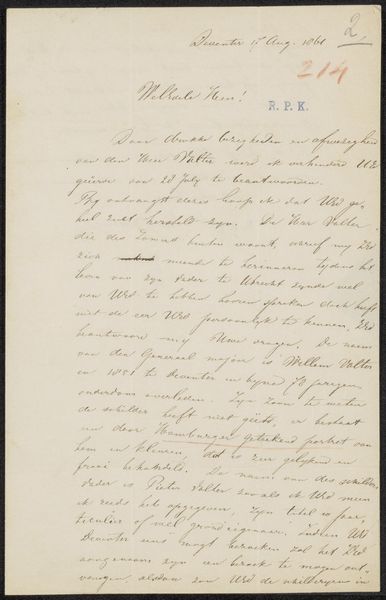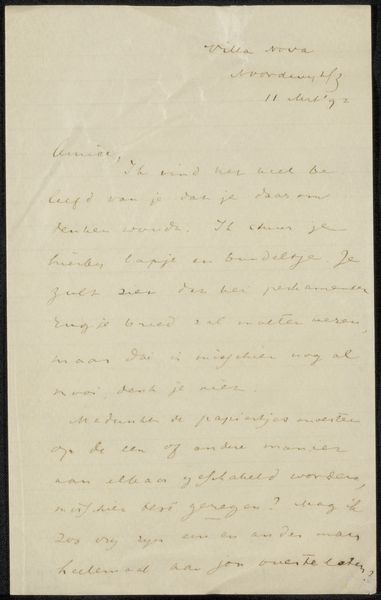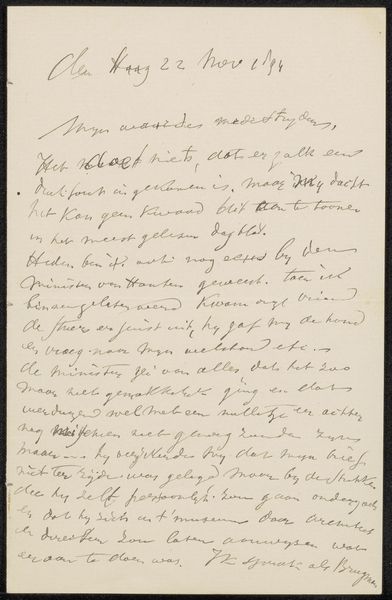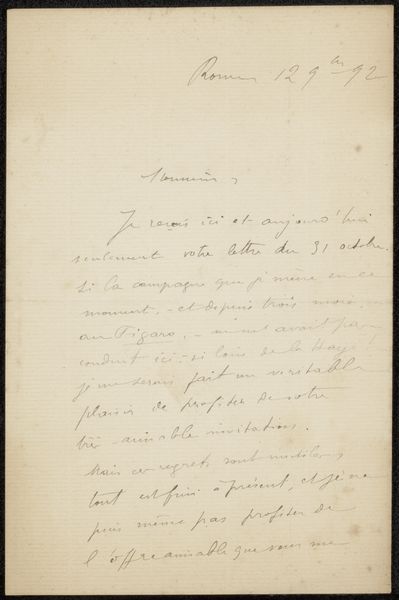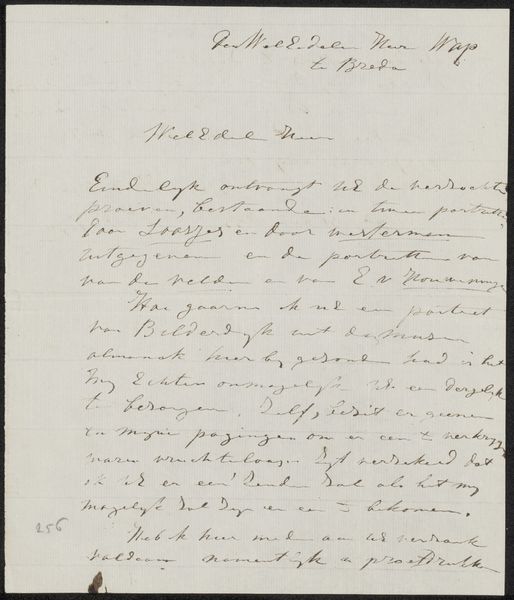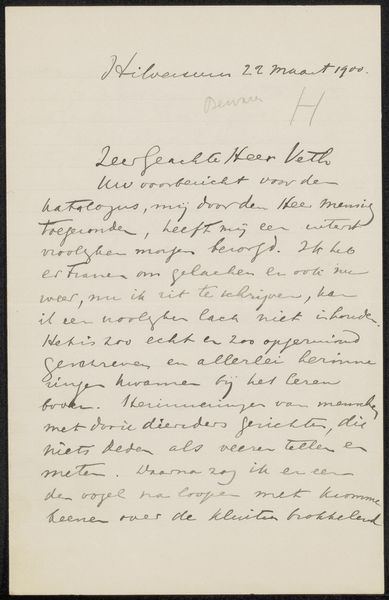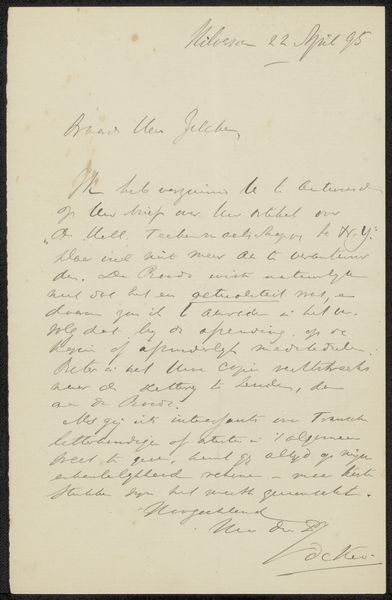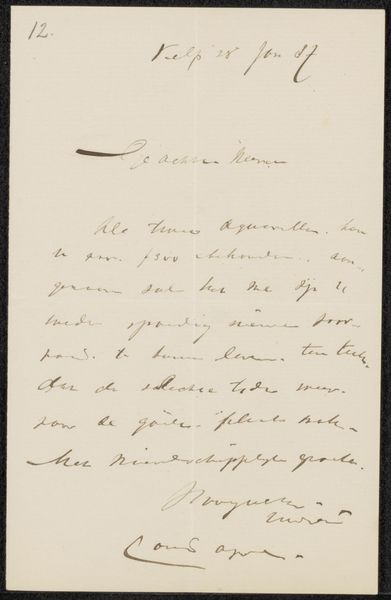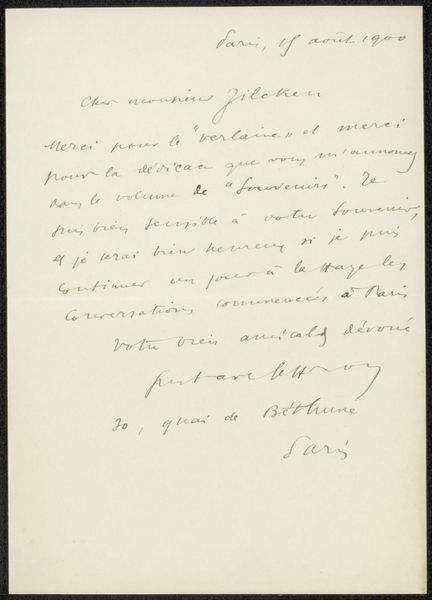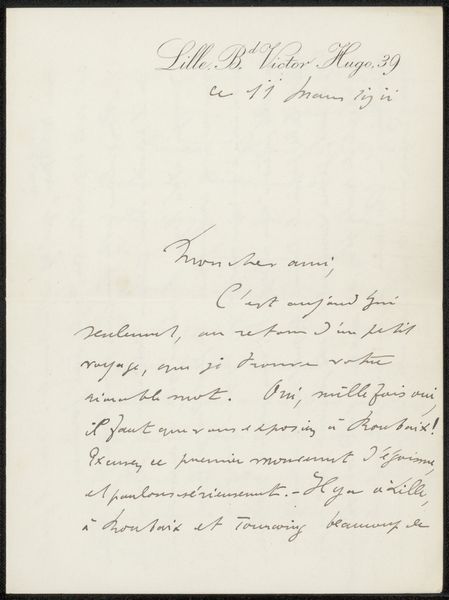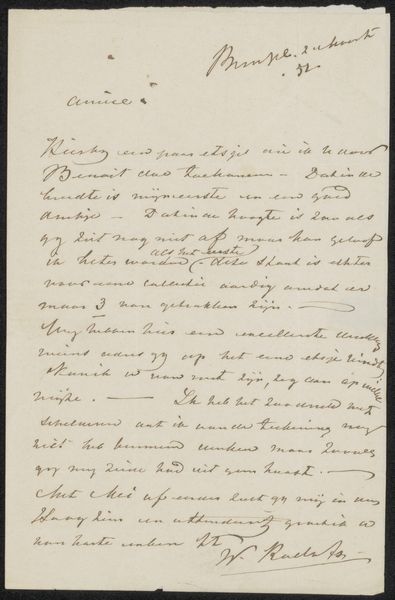
drawing, paper, ink, pen
#
drawing
#
ink paper printed
#
paper
#
ink
#
pen-ink sketch
#
pen
Copyright: Rijks Museum: Open Domain
Curator: So, what catches your eye about this work? Editor: Well, this is "Brief aan Philip Zilcken," possibly from between 1909 and 1918, by Adriaan Pit. It's done in pen and ink on paper and is currently housed at the Rijksmuseum. At first glance, it just looks like an old letter. I can't read the Dutch, but I'm curious: why is a letter considered art and displayed in a museum? Curator: That's a fantastic question. You see a letter; I see a document of cultural exchange. Consider Adriaan Pit; he was a towering figure in the Dutch art world, a historian, a museum director – essentially a gatekeeper of taste. This isn't just any note; it offers a glimpse into the art world of the time. He is clearly writing to another major figure within the Dutch art world in the period. How do institutions shape perceptions of value? Editor: That’s interesting! So, its value comes less from aesthetics and more from what it represents historically, and who produced it. How museums work becomes integral to how we assess such works. Curator: Precisely. The act of display in the Rijksmuseum elevates it. Think about the political implications of choosing what to preserve and celebrate. Every choice says something about how the institution envisions Dutch cultural identity. The letter becomes a symbol of networks, patronage and, ultimately, the canon-making process itself. Does that shift your perspective? Editor: Absolutely. I was initially just considering the object itself. I now understand that, in viewing this, we are seeing who and what Dutch museums chose to honor. I wonder about all the untold stories held in correspondence like this. Thanks so much for that point of view. Curator: Indeed. It’s important to consider that for every work that’s in a museum, there are countless others left in drawers.
Comments
No comments
Be the first to comment and join the conversation on the ultimate creative platform.

